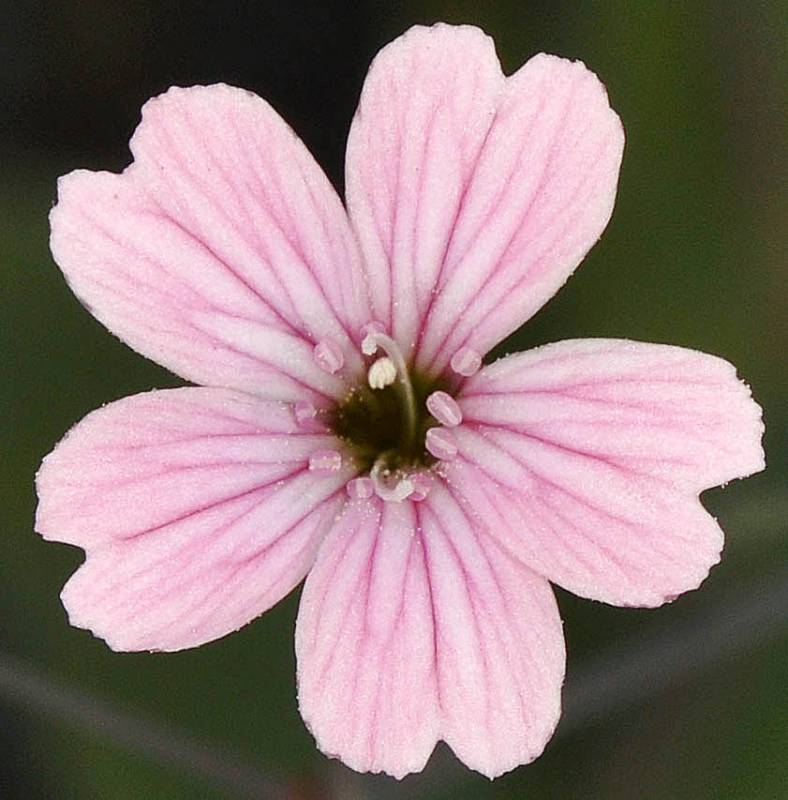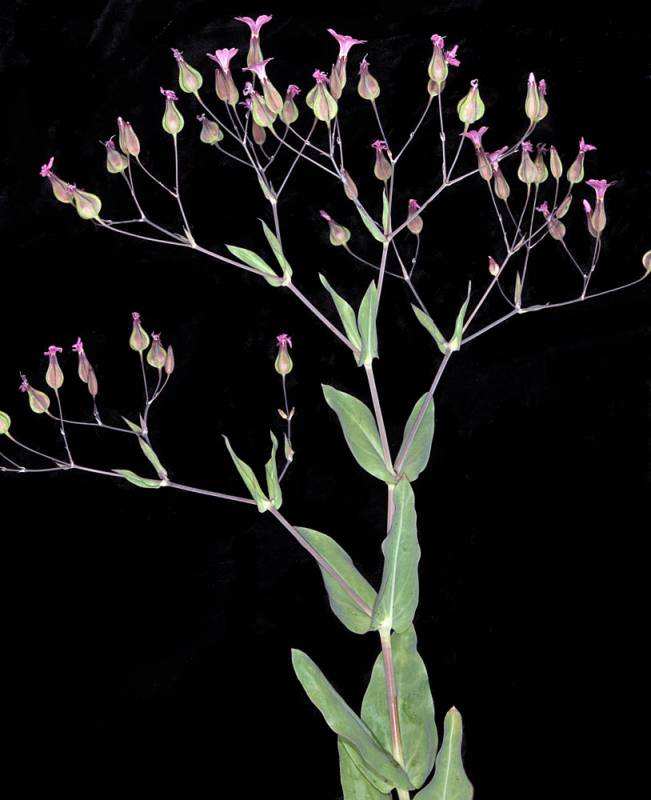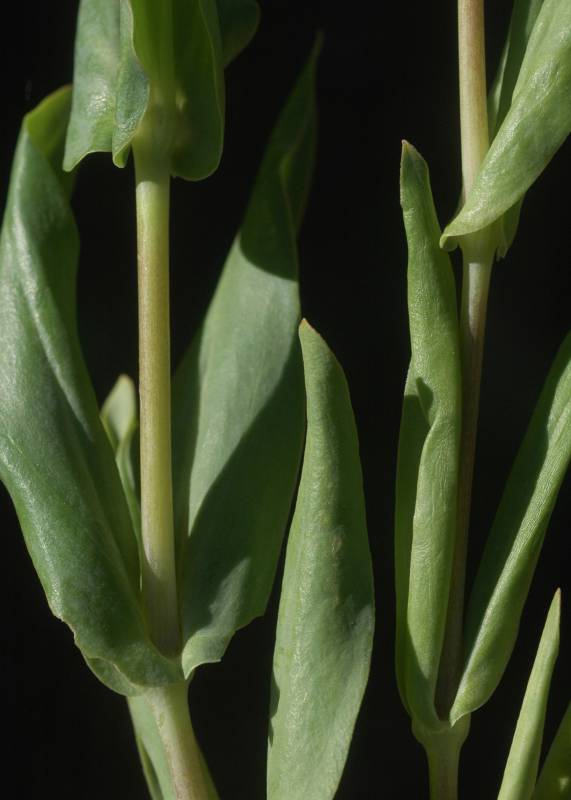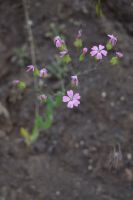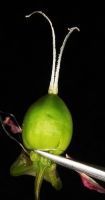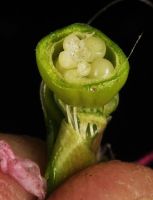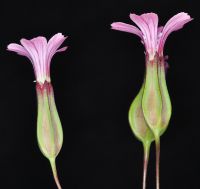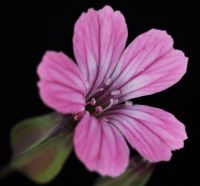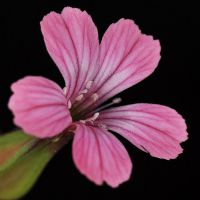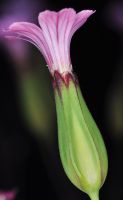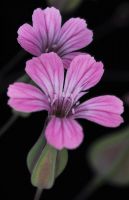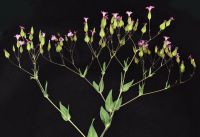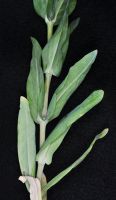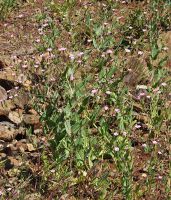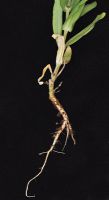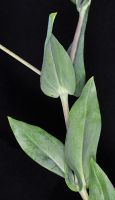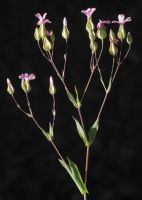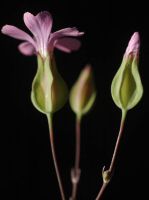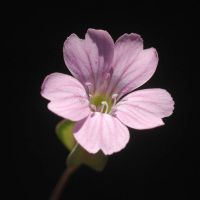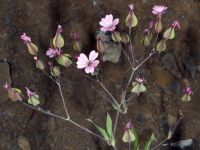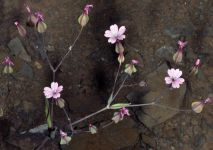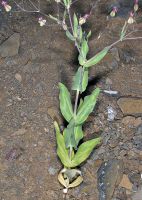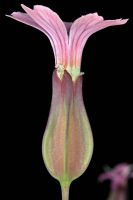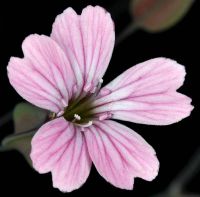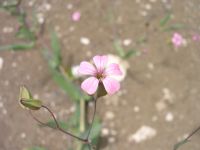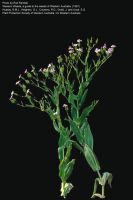Distribution: Occurring on both sides of the Cascades crest in Washington; Alaska to California, east across North America to the Atlantic Coast.
Habitat: Roadsides, railways, fields, and other disturbed, open areas.
Flowers: May-August
Origin: Introduced from Europe
Growth Duration: Annual
Conservation Status: Not of concern
Glabrous, glaucous annual from a taproot, the stem usually simple, up to 8 dm. tall.
Leaves mostly cauline, opposite, entire, lanceolate or oblanceolate, sessile and auriculate, 4-9 cm. long and 0.5-3 cm. broad.
Flowers numerous in a flat-topped inflorescence; calyx tubular, 5-lobed, 10-14 mm. long, glabrous and purplish, much inflated and strongly 5-winged in fruit; petals 5, pink to red, the claw exceeding the calyx, the blade 5-8 mm. long, obovate with a wedge-shaped base and a slight notch.
Capsule 1-celled.
Publication: Feddes Repert. 73: 52. 1966.
Vaccaria segetalis (Necker) Garcke ex Asch. [HC]
PNW Herbaria: Specimen records of Vaccaria hispanica in the Consortium of Pacific Northwest Herbaria database
WA Flora Checklist: Vaccaria hispanica checklist entry
OregonFlora: Vaccaria hispanica information
E-Flora BC: Vaccaria hispanica atlas page
CalPhotos: Vaccaria hispanica photos

